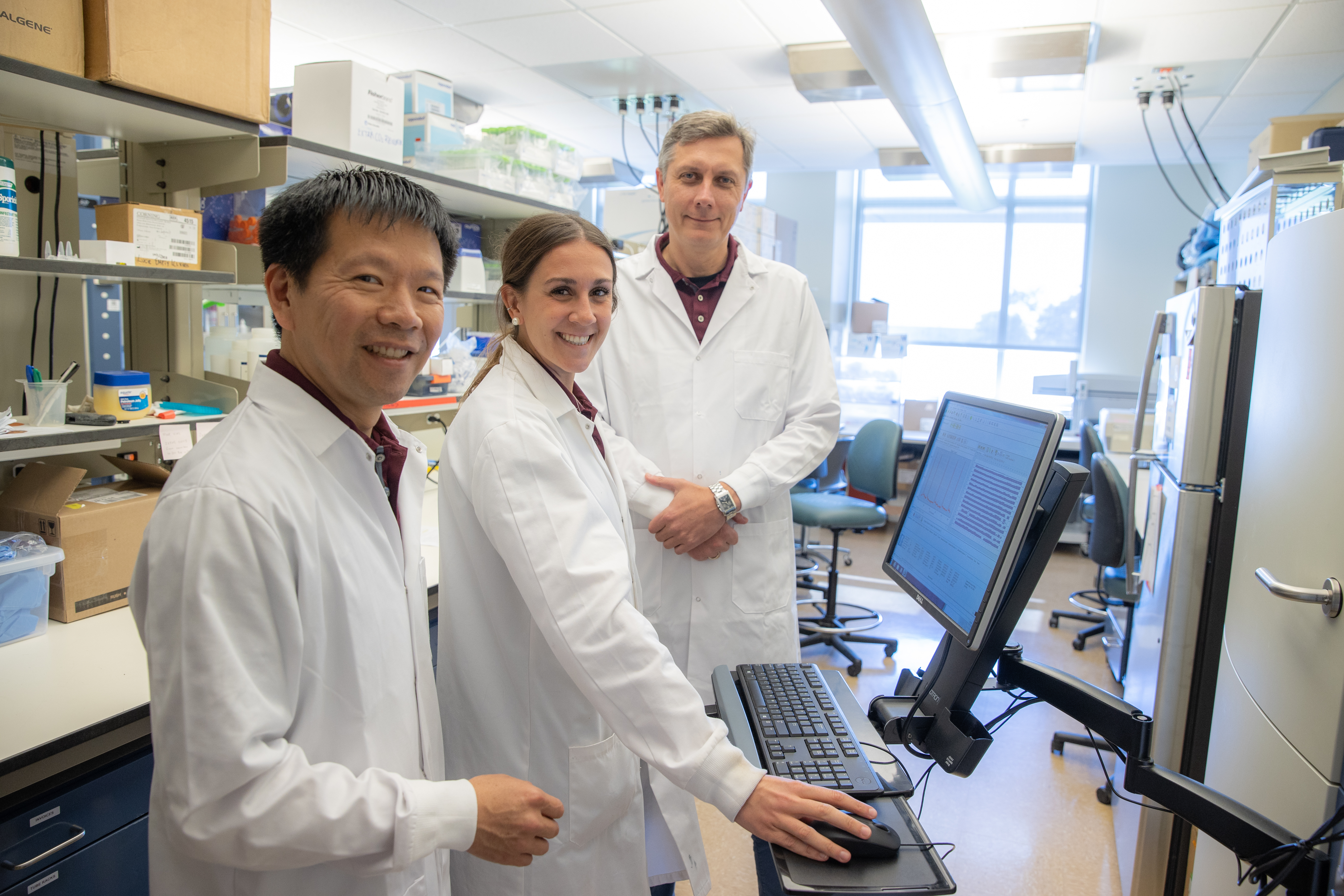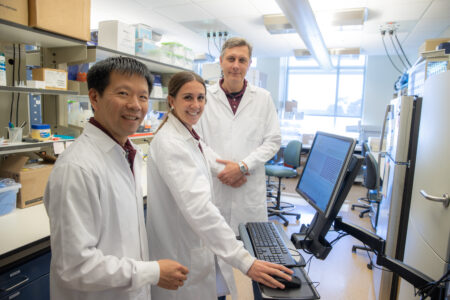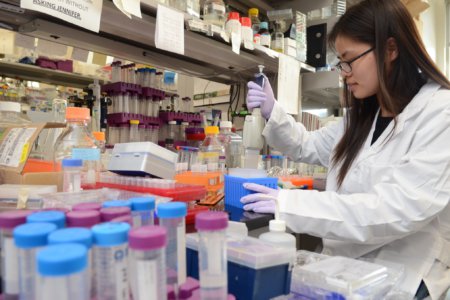To fully comprehend the breadth and impact of Texas A&M University’s College of Veterinary Medicine & Biomedical Sciences (VMBS), step into Dr. Michael Criscitiello’s Comparative Immunogenetic Laboratory. Here, he and his team are shaping the future of immunology and tackling global health concerns for both animals and humans.
“I am neither a veterinarian nor a pathologist but have found my very comparative immunology research fits well here,” he explains. “I like that in a vet college, no one thinks it is odd to use a cow, shark or manatee to learn what is fundamental about our lymphocytes and immune responses.”
At the heart of Dr. Criscitiello’s research is collaboration — not just within the lab but across departments, institutions, and disciplines. This collaborative spirit is a hallmark of the VMBS experience, where students gain exposure to groundbreaking research and real-world problem-solving.
Hence, it is ranked as the 4th best veterinary college in the US and 7th best globally in the 2024 Quacquarelli Symonds (QS) rankings. This recognition stems from the college’s holistic approach to education and research, offering students opportunities to engage in fields as diverse as translational medicine, epidemiology, toxicology, and biomedical sciences.
The best part? All study levels are welcome to join in. VMBS’s unique structure integrates undergraduate, graduate, and professional programs, providing a flexible and customizable curriculum to meet the needs of its diverse students and faculty.
For graduate students, the college is a one-way ticket to an advanced skill set. Enrolling means joining a connected community of 260 learners most of who are in the Biomedical Sciences (BIMS) graduate program, which offers three pathways: the MS non-thesis, the MS-thesis, and the PhD — all of which are ideal for those vying careers in basic science, clinical applications, or translational research. The college is also home to an interdisciplinary graduate program in Toxicology and two Master of Science (MS) degrees in Veterinary Epidemiology & Public Health and Science & Technology Journalism.
MS-thesis and PhD students, in collaboration with their graduate advisory committee, can customize their educational journey based on their unique backgrounds, experiences, and research interests. However, all academic programs unlock access to VMBS’s state-of-the-art laboratories.

Texas A&M University
“I like to say that one of the best and worst things about doing research at A&M is its amazing scope and scale of infrastructure, resources and expertise,” says Dr. Criscitiello. “There are no silos impeding collaboration, and you can find just about everything somewhere at A&M to do what you want to do. It is so large that it can be hard to know who is doing what in our myriad colleges, departments, centers and institutes.”
Indeed, VMBS’s research portfolio is extensive. Dr. Weston Porter, alongside collaborators at the University of Colorado Cancer Centre, are exploring how SEMA7A and SIM2 molecules affect drug resistance in postpartum breast cancers, with potential for new therapies. Dr. Michael Golding’s groundbreaking work challenges conventional ideas by investigating paternal alcohol consumption’s impact on fetal development, paving the way for more comprehensive healthcare strategies.
Professor Scott Dindot led the development of the GTX-102 drug, which was acquired by Ultragenyx Pharmaceutical and has marked a significant step toward treating Angelman Syndrome. VMBS researchers like Dr. Noah Cohen and Dr. Christopher Seabury are also on the frontlines of vaccinating pregnant mares to protect foals from pneumonia and improving resistance to Chronic Wasting Disease in white-tailed deer, respectively.
Meanwhile, over 15 faculty and graduate students in Texas A&M’s Veterinary Education, Research, & Outreach (VERO) program are leading efforts to combat antimicrobial resistance (AMR) in veterinary medicine, a critical issue that affects animal and human health. In addition to the main College Station campus, VERO is located on the West Texas A&M University campus in Canyon, Texas.

Source: Texas A&M University
This satellite campus is strategically positioned in the heart of the Texas Panhandle, a region responsible for approximately 30% of the United States’ food livestock industry. VERO’s proximity to this vast agricultural hub makes it an ideal environment for training large animal veterinarians and graduate students focused on food safety, animal health, and biosecurity.
“At the BIMS program level, we offer special opportunities to use many different traditional, non-traditional, production, and pre-clinical models for biological and biomedical research — with the facilities and expertise that only a tier-one veterinary, engineering, medical and agricultural university can,” says Dr. Criscitiello.
VMBS also offers an extensive array of workshops that help students grow as communicators, entrepreneurs, and leaders — skills that will prove essential as they enter the professional world. Its vast network of partnerships with government agencies, private companies, and other campuses offers students real-world exposure and the opportunity to apply their academic learning in diverse, impactful ways.
Sound like your dream education? Apply to the College of Veterinary Medicine & Biomedical Sciences today.
Follow the Texas A&M College of Veterinary Medicine & Biomedical Sciences on Facebook, Instagram, X, YouTube, and LinkedIn












